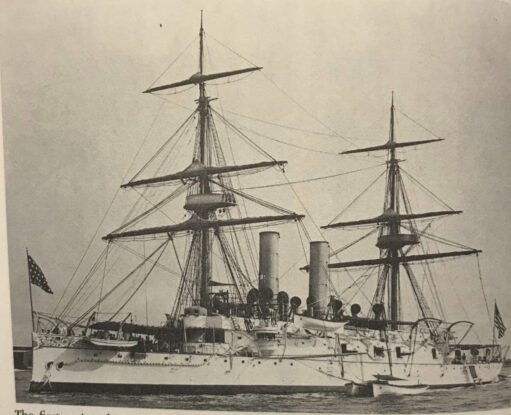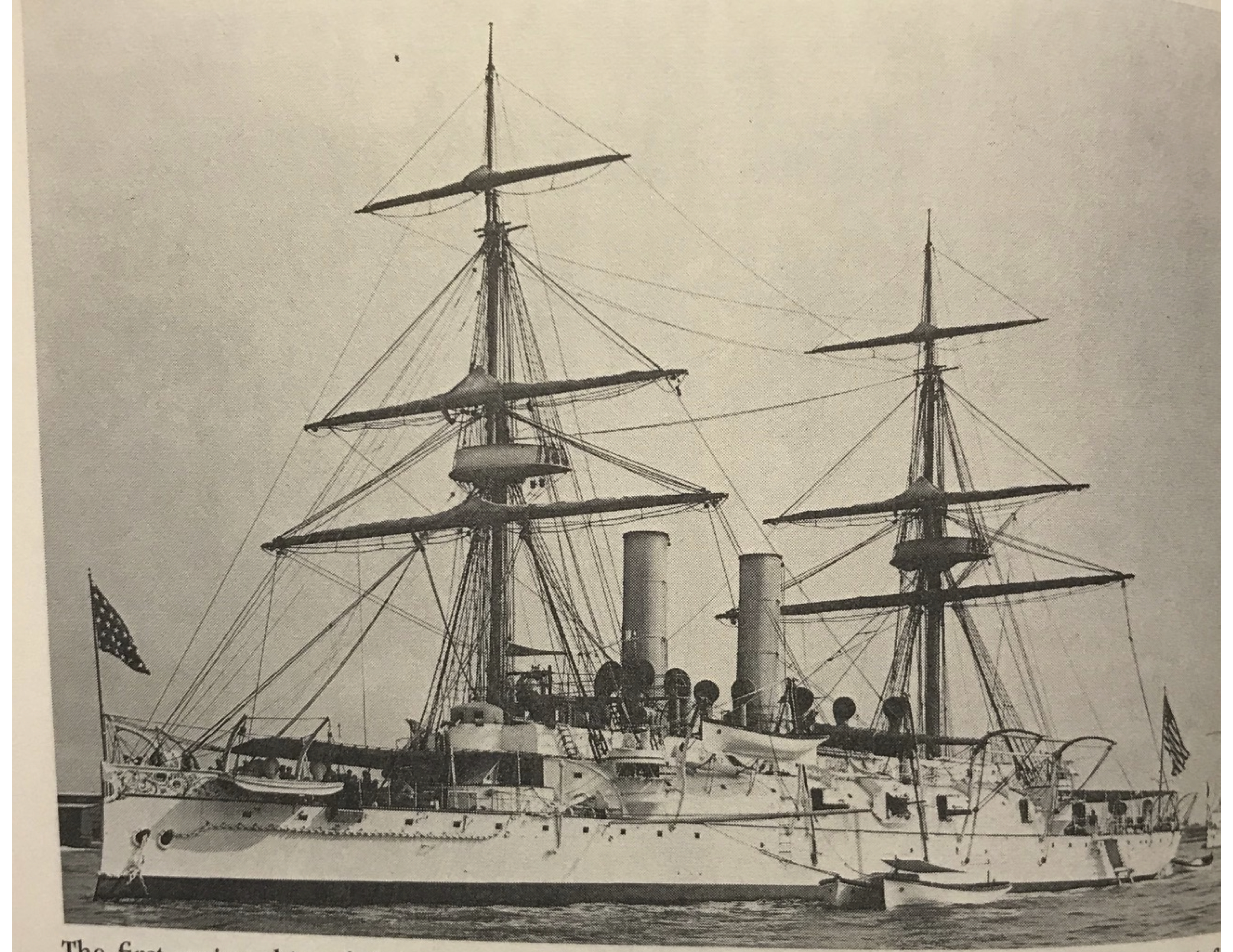February 19, 2019
Curator’s Log Feb. 2019: “Battle of the Steam Launches: Newport 1887”
The Herreshoff’s made their first delivery of a steam launch to the US Government in 1876 and over the next 22 years they delivered a number of steam launches ranging in size from 22-42 feet to the Coast Survey, Fish Commission, Lighthouse Service and US Navy.

Curator's Log: February 2019
Battle of the Steam Launches: Newport 1887
Introduction
The Herreshoff’s made their first delivery of a steam launch to the US Government in 1876 and over the next 22 years they delivered a number of steam launches ranging in size from 22-42 feet to the Coast Survey, Fish Commission, Lighthouse Service and US Navy. (All services staffed by officers of the US Navy.)
In October 1880 Chief Engineer Benjamin F. Isherwood, head of a permanent navy trials and evaluation board, conducted extensive ten-week trials of two identical Herreshoff 33–foot launches fitted with different engines against a 33-foot Navy designed and built launch. The below summary of results is conclusive as to the superiority of the Herreshoff boats.
- Herreshoff weight was ½ (HMCo 6355 lbs.; Navy 13364 lbs.) and economy of fuel was double
- Herreshoff maximum speed was 11 mph vs. the Navy’s 8.5
- Herreshoff carrying capacity; finish & arrangement: & capability of continuous service were all evaluated as “greater or enormously greater”
The report concluded:
- “As regards the hulls- The models of the Herreshoff launches and distribution of their weights, have been so perfected by long and intelligent experience and experimenting, as to scarcely leave room for improvement…the required strength is obtained with the least weight…the Herreshoff steam launches are incomparably superior to the Navy launches.”
- “The machinery employed in the launches is quite original and greatly superior to the Navy… (Herreshoff) boiler is practically inexplodable… the lightest ever constructed for its power and the water contained in it is the least.”
Similar results demonstrating Herreshoff superiority were obtained in other official trials both here and in England. Yet within the Navy line officers and Bureaus there was an undercurrent of criticism that the light hulls of this “yacht builder”, while easier to hoist and store from ship’s davits, were not up to the rigors of naval service; no matter what the results of official trials.
This is the story of one naval exercise where the comparative performance of Herreshoff and Navy launches was at issue
Newport Naval “Sham Battle” Oct 1887
In October of 1887 a major North Atlantic Squadron exercise was held in Rhode Island waters. Two parts of the exercise involved an aggressor force attempting to sink by torpedo attack ships in the harbor followed by the landing of an attack force on Coaster Harbor Island, defended by sailors of the naval training station augmented with sailors from the squadron. On Tuesday October 11, 1887 a force of some 20 steam launches, spar torpedo-equipped cutters, whaleboats and gigs made a seaborne torpedo attack on the 283-foot protected cruiser USS ATLANTA. The attack was successfully repulsed and was debriefed the next day at the Naval War College. This was followed on Thursday Oct. 13 by a landing of 600 sailors and marines from the crews of six warships onto Coasters Harbor island using the same 20 small boats. The attack was led by CDR W. D. Hoff USN commanding officer of the 207-foot screw steam sloop USS OSSIPEE. The critique of this exercise was also held at the Naval War College.
The critique was attended by Hoff and Capt. F. M. Bunce USN, commanding officer of the ATLANTA. Bunce was justly proud of his ship, the first build of the “new steel navy” and of his 33-foot Herreshoff launch (HMCo 132). In his remarks Hoff severely criticized the Herreshoff launches for their poor towing capacity. In the attack the old-style navy steam launch towed with ease 13 armed and fully manned boats with considerable seas running, while the Herreshoff launch found difficulty towing four of the same pulling boats in the same sea conditions. The Herreshoff launches are “models of beauty, and in favorable conditions they have also high speed,” but they are “far from possessing the requisites of a naval steam launch.” Economy of fuel claimed is “probably capable of demonstration, but …totals … are so small, should not weigh at all when compared with their relative efficiency in time of need, as in the case cited.” The “requisites of a naval steam launch”- Seaworthiness- coupled if possible, with speed, Towing capacity, Simplicity of construction and lastly Economy of fuel. The news article of the event did not mention any remarks by Capt. Bunce, but in summary offered that some modification is necessary in the steam launches provided by Herreshoff.
Battle of the Launches
There the matter rested, but not in the mind of Capt. Bunce. He thought the idea that Herreshoff launches were “race horses only” and not the “draught horses” required for naval service bunk and set out to prove it! In late November he ordered CDR Hoff to send down to ATLANTA the OSSIPEE’s old navy type launch. He had her connected to his Herreshoff launch by heavy hawsers stern-to-stern; then steam away from each other, slowly at first until the engines reached full power. ATLANTA’s launch began to tow OSSIPEE’s launch toward Rose Island as if it “had no engine at all.” The pressure against OSSIPEE’s launch propeller, as the boat was drawn backward, caused it to turn against its own direction completely stopping the engine. CDR Hoff, who was following in a navy steam launch, was unable to keep up.
John Palmieri

